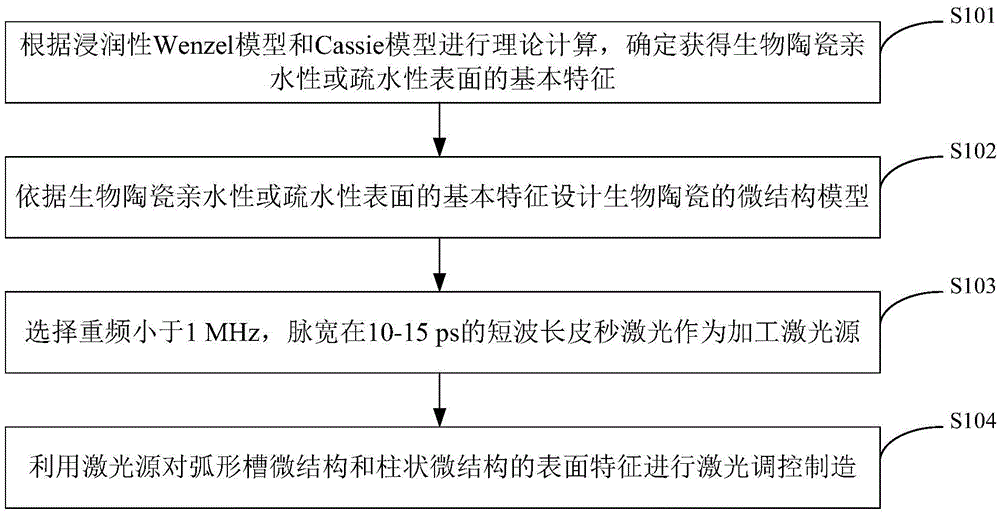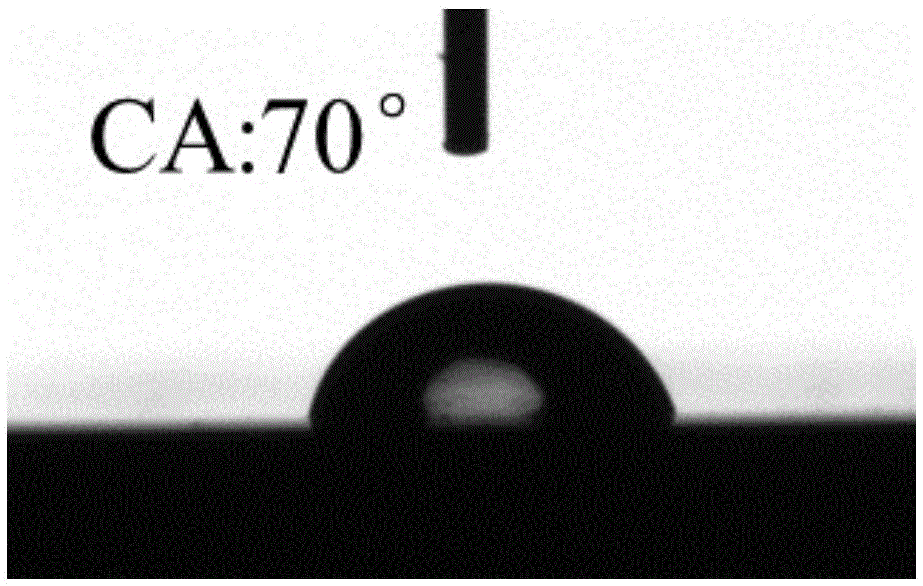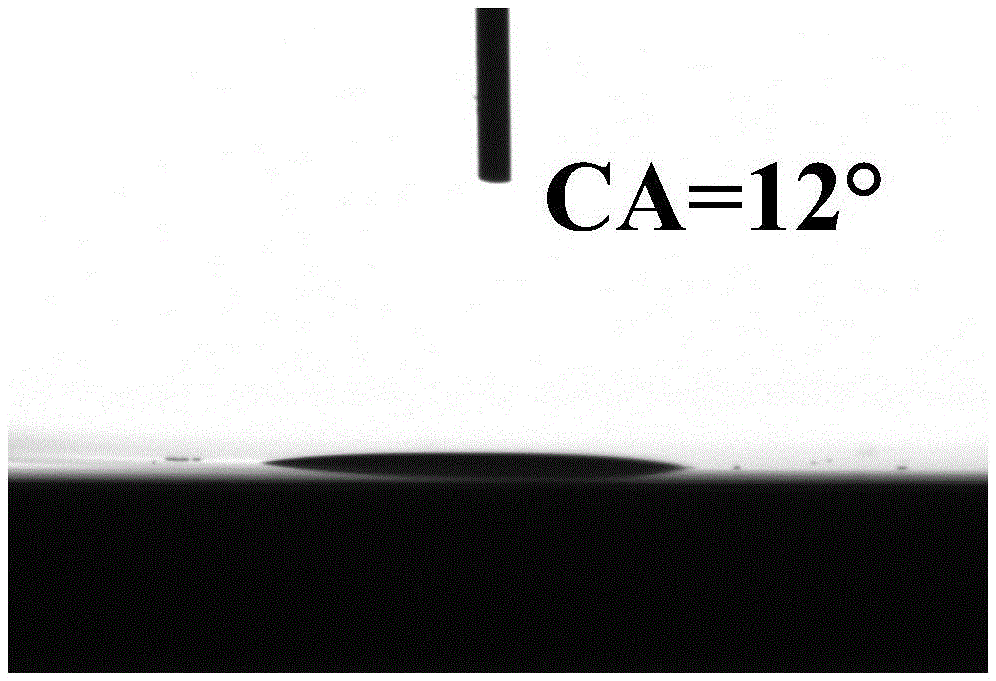Method for bidirectional and free control on wettability of surface of biological ceramic
A bioceramic and surface infiltration technology, applied in the field of biomedicine, can solve the problems of short coating timeliness and micro cracks on the ceramic surface, etc., and achieve the effects of high precision preparation controllability, low manufacturing cost, and a wide range of applicable materials
- Summary
- Abstract
- Description
- Claims
- Application Information
AI Technical Summary
Problems solved by technology
Method used
Image
Examples
preparation example Construction
[0035] The present invention has high-precision controllability of preparation. Aiming at the required specific wettability surface, the contact angle of the material surface can be precisely controlled through the structure model design and the adjustment of the laser process (the material surface can be controlled from super-hydrophilicity 10° to hydrophobicity). Free conversion between 125°); It can also achieve a material with different wetting effects in different areas;
[0036] The present invention can regulate the surface wettability of bioceramic materials without area limitation, and is easy to realize the surface wettability of large-area materials. The method is easy to operate, has low manufacturing cost, and does not require other auxiliary materials; and regulates the surface wettability of bioceramic materials It will not damage the basic phase properties of the material, is safe and reliable, and has a wide range of applicable materials.
[0037] Attached below F...
Embodiment 1
[0040] (1) Measuring the intrinsic contact angle of the material: ZrO 2 Ceramic acetone was ultrasonically cleaned for 1 minute, and then ultrapure water was ultrasonically cleaned 4 times for 1 minute each time. The intrinsic contact angle CA of the material was measured with an OCA20 video optical contact angle measuring instrument to be 70°, such as figure 2 Shown.
[0041] (2) Design the microstructure model based on the basic surface characteristics of the superhydrophilic bioceramics obtained by simulation calculation,
[0042] The arc-shaped groove microstructure can be a ceramic hydrophilic surface feature, and the solid-liquid contact area per unit area can be changed by the curvature of the arc groove, so as to achieve the purpose of controlling the hydrophilic contact angle. The surface feature of the arc-shaped groove microstructure is designed as H 1 1 =20μm, interval b 1 =25μm.
[0043] (3) Choose a high-frequency picosecond laser with a wavelength of 355nm and a pulse...
Embodiment 2
[0046] (1) Measure the intrinsic contact angle of the material: add ZrO 2 Ceramic acetone was ultrasonically cleaned for 1 minute, and then ultrapure water was ultrasonically cleaned 4 times for 1 minute each time. The intrinsic contact angle CA of the material was measured with an OCA20 video optical contact angle measuring instrument to be 70°, such as figure 2 Shown.
[0047] (2) Design a microstructure model based on the basic hydrophobic surface characteristics of bioceramics obtained by simulation calculation. The columnar microstructure is designed to be the characteristic of the hydrophobic surface of the ceramic. By changing the characteristic value of the interval and side length of the columnar structure, the purpose of controlling the hydrophobicity of the bioceramic surface is achieved. The surface features of the columnar microstructure are designed as intervals b 2 =25μm, side length a 2 =20μm, H 2 =40μm.
[0048] (3) A high-frequency picosecond laser with a wavelen...
PUM
| Property | Measurement | Unit |
|---|---|---|
| Wavelength | aaaaa | aaaaa |
Abstract
Description
Claims
Application Information
 Login to View More
Login to View More - R&D
- Intellectual Property
- Life Sciences
- Materials
- Tech Scout
- Unparalleled Data Quality
- Higher Quality Content
- 60% Fewer Hallucinations
Browse by: Latest US Patents, China's latest patents, Technical Efficacy Thesaurus, Application Domain, Technology Topic, Popular Technical Reports.
© 2025 PatSnap. All rights reserved.Legal|Privacy policy|Modern Slavery Act Transparency Statement|Sitemap|About US| Contact US: help@patsnap.com



